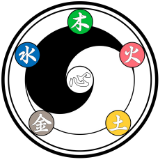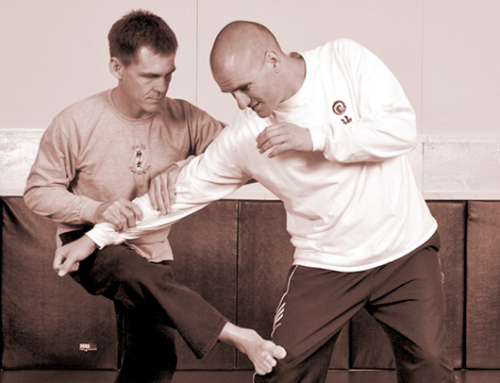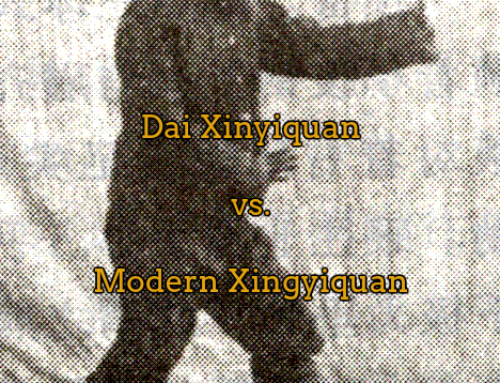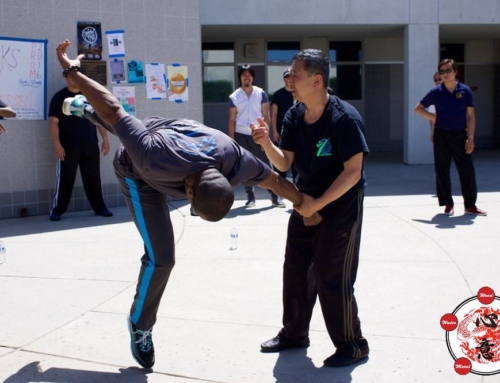This article analyzes the connection between the body mechanics developed in traditional/internal martial arts, and the defensive techniques in boxing such as bob and weave, Philly Shell, or shoulder roll. Also to note that such defensive techniques in boxing can also be used in kickboxing. In my experience, to do such defensive techniques correctly, both the shoulders and Kua have to be open, meaning that these joints can create little space and the tendons attached to it can stretch. Chen Style Taijiquan contains the training method that is specifically good at opening the shoulders and Kua. Kua or hip joint represents the connection of the head of the upper femur to the pelvic region at the acetabulum.
When shoulders and Kua are open, these joints create a cross-connection, meaning that the left shoulder joint can connect with the right Kua joint, and the right shoulder joint can connect with the left Kua joint. If the shoulders and Kua are not open, or if only the shoulders are open or only the Kua are open, then the defensive techniques of bob and weave, Philly Shell, or shoulder roll cannot be executed correctly. These defensive techniques are very important for any striking arts. Ironically speaking, even though Chen Style Taijiquan is very good at developing the fundamental body mechanics to coordinate the cross-connection of the shoulders and Kua, but learning Taijiquan without learning any striking art makes Taijiquan useless for striking in my opinion.
As stated in the internal martial arts principles, that the shoulders and hip joints are considered the root joints, so the connection of these joints are very important, not just superficial connection on the muscular level, but deep internal connection through opening these joints. Once these joints are open and activated, they feel like gears inter-connected by axles. When one of these root joints move or rotate, the other root joints would move or rotate with it naturally. It’s very mechanical and requires specific training methods, whether external or internal approach, to activate the gear effect. Boxing makes a good functional usage of this body mechanics, while internal martial arts use it to express the release of internal force.
This clip never gets old. Canelo displaying superb head movement. ??????
Posted by The Boxing Rundown on Sunday, June 21, 2020
Another point is that when the fundamental body mechanics is developed (whether through internal or external training method) to do bob and weave, Philly Shell, or shoulder roll correctly in boxing or kickboxing, the front hand usually drops down to the waist area (at times even both hands drop down to the waist area). When watching fights by elite-level boxers or kickboxers with advanced body mechanics of the cross-connection between the shoulders and Kua, you would normally see them drop their front hand or even both hands down to the waist area. There are two reasons why the hands drop down to the waist area.
The first reason is that by dropping the hand(s) down, it helps the shoulder joints to achieve a deep level of relaxation, and on the contrary, when both hands are held high at the chin level, the shoulder joints have to hold some tension, which reduces the level of relaxation in the shoulder joints. Only a deep level of relaxation of these joints (shoulders and Kua) allows for a higher range of motion, and in a way, it feels like “as if” these joints are rotating, and at the same time, these joints would establish a strong coordination. For example, if the left shoulder joint opens, this action would cause the right Kua joint to close, which would cause the right shoulder joint to close, which then would cause the left Kua joint to open. (Left Shoulder Open -> Right Kua Close -> Right Shoulder Close -> Left Kua Open). As a result of this coordination, both linear (shoulder to shoulder / Kua to Kua) and cross (shoulder to Kua) connections are established by the opening, closing, and deep relaxation of the shoulders and Kua.
The second reason to drop the front hand or at times both hands to the waist area is to increase the sensory function of the mind/intention. Meaning that instead of using the vision to judge the opponent’s techniques and the speed and power behind the techniques, one would use the mind to sense. It feels like the person can sense the speed, power, and distance reach of the opponent’s techniques when it is just initiated, “as if” the person can make a precise measurement of the opponent’s techniques that have not been fully executed. For people who have practiced Taijiquan push hands to a good level, they develop similar kind of feeling, like knowing the opponent’s intention and force before it is even fully executed, and knowing where the opponent’s force will reach before the force physically reaches there. The point is that for the sensory function of the mind to perform at its maximum capacity, there should be no physical objects in front of the head area to block its sensory function because the mind resides inside the head.
Elite level boxers or kickboxers with the ability to do bob and weave, Philly Shell, or shoulder roll correctly drop their hands in fighting not because they are cocky, they do it for the two reasons discussed above. There may be other reasons why they drop their hands, but my experience comes down to these two reasons. One issue to consider is the fact that the sensory function of the mind is not always accurate, so at times the sensory function measures the speed, power, and distance reach of the opponent’s techniques incorrectly. Under such a scenario, if the hands are not held up at the chin’s level, it means that the head area becomes an open target. However, if both shoulders and Kua can establish a strong cross-connection, then this connection would serve the purpose of neutralizing or reducing the impact of the head area from strikes. The reason behind this is that by establishing a strong cross-connection, the head and the spine attached to it can make quick subtle reactive adjustments, to reduce the impact when getting hit, initiated by the subtle range of motion of the shoulders and Kua. The elasticity of the spine also plays a very important role in neutralizing or reducing impact from strikes to the head, which is closely connected with opening the shoulders and Kua. This ability to neutralize or reduce the impact from strikes is common among good counter-strikers in boxing or kickboxing.
All the things I wrote here are from my personal experience, it doesn’t mean that my experience is completely correct, and some people may have other experiences different from mine. Also, I don’t consider myself to be highly developed in striking arts, but I did enough striking and sparring training when I was younger to acquire the necessary knowledge to share my opinion. I used to do a lot of striking and sparring (include teaching it) when I was younger, but my interest has shifted more to internal martial arts as I got a bit older.
Internal martial arts don’t necessarily make me a better fighter, but it gives me a much deeper understanding of the connections of the physical body from the inside. Without the internal martial arts training, I wouldn’t be able to develop a good understanding of the particular body mechanics of the bob and weave, Philly Shell, or shoulder roll. These defensive techniques are not techniques per se, it is a process of building and refining the necessary body mechanics to move the body efficiently (without redundant micro-movements). So to me, the movements of bob and weave, Philly Shell, or shoulder roll is an expression of efficient motion and force, which is similar to the expression of forces in internal martial arts. Techniques are not equivalent to forces.
People may or may not agree with me on some of the points addressed in this article, but by sharing my experience, it provides at least one perspective for others to think about this particular issue, which I think is very important for Chinese martial arts to make any progress in the area of striking.




Leave A Comment
You must be logged in to post a comment.